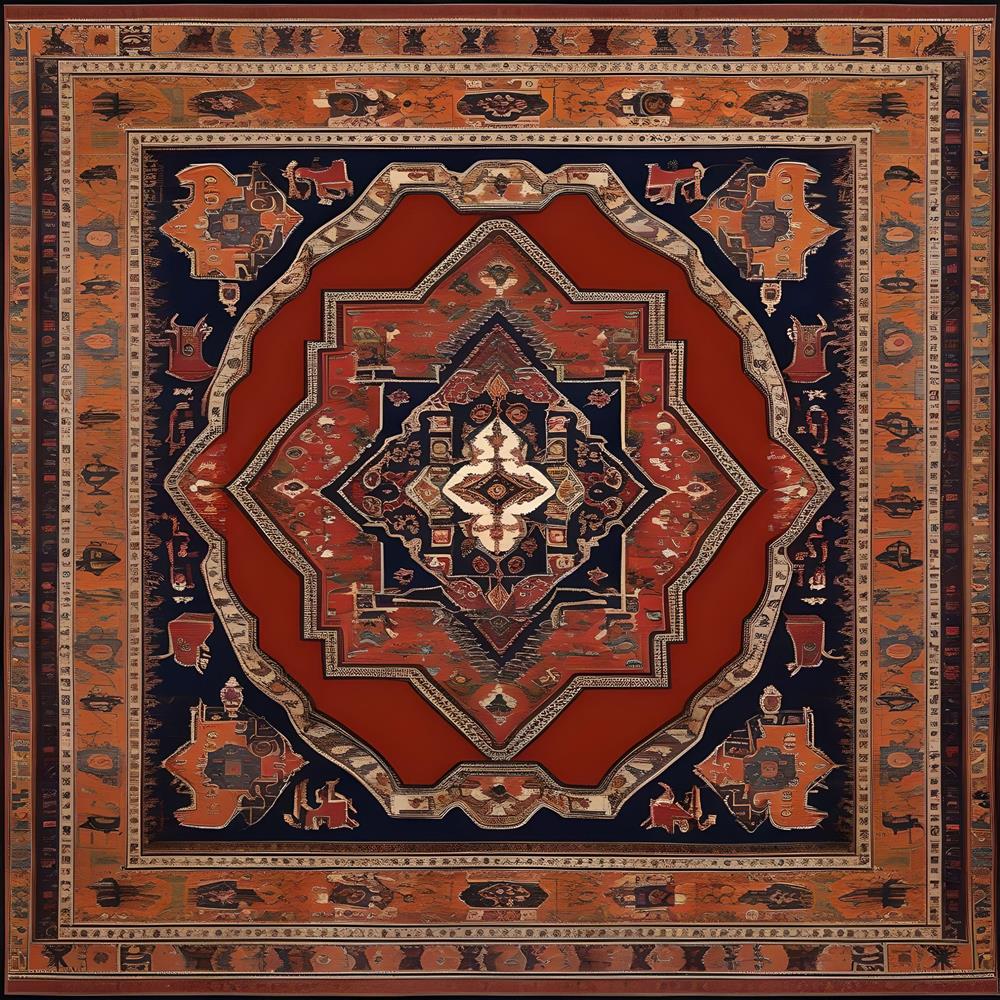Discover the Beauty and Craftsmanship of Persian Nomad Rugs
In the heart of Iran, a vibrant tapestry of culture and artistry unfolds through the creation of traditional nomadic carpets. These exquisite hand-woven pieces are more than mere decorative items; they embody a rich heritage that spans centuries, showcasing the skill and dedication of talented artisans. Each rug's intricate patterns and bold color palettes tell a unique story, reflecting the diverse styles endemic to various regions. Crafted from locally sourced wool and silk and dyed using natural materials, these rugs exude a charm and authenticity that mass-produced alternatives simply cannot match. The enduring motifs, such as the revered "Tree of Life," imbue each piece with profound cultural significance, while their robust nature ensures they are as functional as they are beautiful. By introducing one of these stunning creations into your home, you enhance your living space and forge a connection to an age-old tradition steeped in craftsmanship and artistry.
2. Unique Designs and Colors in Artisan Rugs
Artisan rugs stand out in the realm of home décor due to their distinctive designs and vibrant colors, beautifully reflecting their creators' cultural heritage and artistic expression. Each rug is a labor of love, meticulously hand-knotted by skilled weavers who pour their creativity and tradition into every piece. This artistry results in intricate patterns that seamlessly blend age-old motifs with contemporary sensibilities, ensuring that each rug uniquely manifests history and modernity.
Intricate Designs
The designs found in artisan rugs are as diverse as the cultures from which they originate. They can vary widely, encompassing:
|
Geometric Shapes: These patterns often feature sharp lines and angles that create a sense of order and symmetry in a space. |
|
Abstract Patterns: These designs prioritize artistic expression over literal representation, allowing freeform creativity. |
|
Floral Motifs: Utilizing nature's beauty, these patterns celebrate the vibrant flora of the weaver's homeland. |
|
Figural Motifs: These depict human figures or animals, often rich in storytelling and cultural significance. |
Additionally, many artisan rugs showcase elaborate medallions or allover designs that are striking focal points in any room. Common motifs like the Tree of Life symbolize a connection to nature, while nomadic themes celebrate the lifestyle and journeys of the weavers. Each design is a narrative, encapsulating the traditions and values of the culture it represents.
Vibrant Color Palettes
Color is another defining characteristic of artisan rugs, contributing significantly to their charm and appeal. These rugs often boast lively hues that create a dynamic visual impact. Common colors include:
Bold Reds often symbolize passion and warmth.
Vibrant Oranges: Represent energy and enthusiasm.
Deep Blues: Evoke feelings of calm and tranquility.
Rich Purples: Traditionally associated with royalty and luxury.
Vibrant color schemes are frequently achieved using natural dyes derived from locally sourced materials. This enhances the rugs' aesthetic quality and aligns with sustainable practices, promoting eco-friendly crafting methods. The skillful blending of colors showcases the weaver's artistry, resulting in multicolored designs that are both harmonious and eye-catching.
A Cultural Canvas
Ultimately, artisan rugs transcend their functional purpose; they are true works of art. Each rug tells a story through its intricate designs and vibrant colors, reflecting the creativity and cultural significance of the regions they represent. When one chooses to incorporate an artisan rug into their home, they are not just selecting a decorative item—they are inviting a piece of history, culture, and artistry into their space.
In conclusion, the unique designs and colors in artisan rugs make them visually stunning and rich in meaning and heritage. They serve as a testament to the craftsmanship and creativity of the weavers, ensuring that each piece is a unique addition to any home, filled with stories and cultural significance.
3. Cultural Significance behind Timeless Motifs
The motifs found in Persian nomad rugs carry profound cultural significance, serving as a vital link between the past and the present. Each design element is not merely ornamental; it encapsulates the stories, beliefs, and values of the communities that create them, reflecting their intricate relationships with nature and spirituality.
Narrative Expression through Motifs
At the heart of many of these indigenous motifs is a narrative connecting individuals to their ancestry and cultural identity. Rather than existing solely for decoration, each symbol and pattern embodies a story that resonates with the wearer. A prime example is the prevalence of geometric patterns, which often symbolize unity and the interconnectedness of all life. This emphasis on a holistic worldview promotes a sense of community and shared responsibility among individuals and toward the environment.
Nature-Inspired Designs
Nature is a significant source of inspiration for the motifs in these rugs. Elements derived from the natural world, including animals and plants, hold profound meanings that reflect the community's values and teachings. For instance:
|
Eagles: Symbolizing wisdom and freedom |
Eagles represent the spiritual aspirations of the people. |
|
Bears: Often associated with strength and courage |
bears embody resilience and healing. |
By incorporating these natural motifs, artisans pay homage to their heritage and share their respect for the environment, making a statement about the importance of preserving the natural world.
The Role of Sacred Geometry
Sacred geometry adds another layer of depth to the motifs in Persian nomad rugs. Shapes like circles and triangles are rich in spiritual significance, representing concepts such as wholeness, the cycles of life, and the passage of time. These geometric forms invite contemplation on the spiritual principles guiding many indigenous cultures, creating a sense of connection to the universe and its forces.
Color as a Cultural Language
Color plays an essential role in conveying these designs' emotional and narrative aspects. Each hue is intentionally chosen, often with specific meanings that evoke particular feelings or recount experiences. The thoughtful selection of colors enhances the rugs' visual appeal and enriches their narrative quality, resulting in an expressive representation of identity and cultural heritage.
Honoring Tradition While Embracing Modernity
In conclusion, the timeless motifs found in Persian nomad rugs are imbued with cultural significance that transcends mere aesthetics. They are powerful expressions of identity, history, and spirituality, fostering a deeper understanding and appreciation of indigenous heritage. By celebrating these motifs in contemporary contexts, we acknowledge the wisdom of the past while creating pathways for future generations to reconnect with their cultural roots. This dynamic interplay between tradition and modernity enriches the global narrative and promotes cross-cultural understanding and respect.
Conclusion
In conclusion, the beauty and craftsmanship of Persian nomad rugs embody much more than mere decorative appeal; they celebrate Iran's rich heritage and artistry. These handcrafted treasures showcase unique designs and vibrant colors that capture the essence of the cultural narratives and traditions from which they arise. The intricate motifs woven into each rug tell stories of the past and foster a sense of community and connection to the environment. As we appreciate these exquisite works of art, we gain insight into the values and beliefs that have shaped generations of artisans. Ultimately, Persian nomad rugs serve as timeless symbols of cultural identity, bridging the gap between history and modernity while enhancing our living spaces' aesthetic and emotional landscape. Where can I buy Iranian carpets? Contact us.

